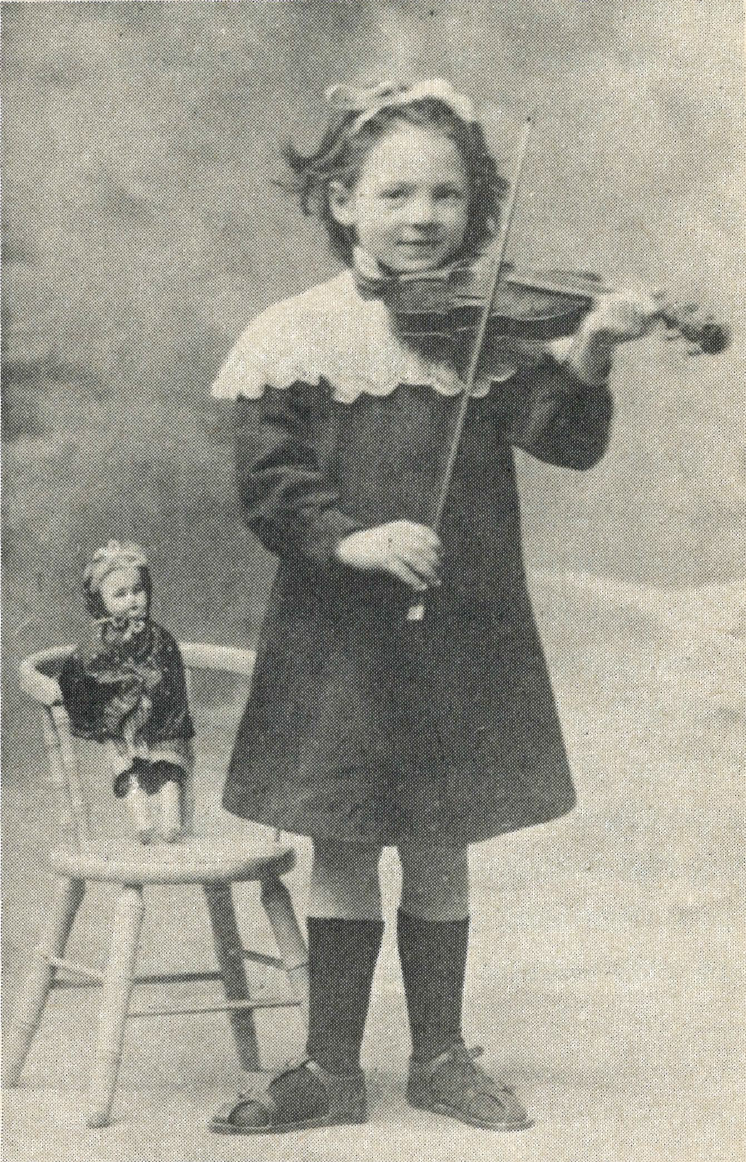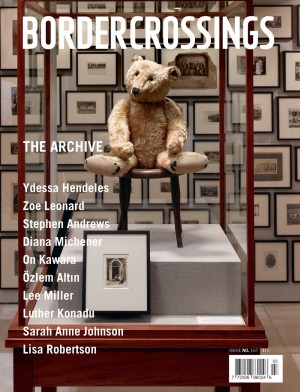S.C. Eckhardt-Gramatte: An Impression
The only time I met Madame Eckhardt-Gramatte was after the National Arts Centre Orchestra (1974) performance of her Triple Concerto. She was giggling at an anecdote about the performance and the giggle seemed to run over with a husky, aggressive enthusiasm. Backstage she seemed a personage, a presence—perhaps, given only the briefest meeting, a character. She wore her hair short and straight and sported, as I remember, a red satin oriental jacket. On stage, her almost obviously triumphal bow with the drably white-tied-and-tailed musicians had a bright incongruity which I suspect she would have enjoyed. They were exhausted by a difficult performance; she was energized by a good one.
She had taken many bows which seemed incongruous to others. Because she soon learned that it was safest to compose under the unrevealing name S.C. Eckhardt-Gramatte, her presence on stage for bows after performances of her works often brought silences and the expectation of an announcement by some woman rather than the applause due to a composer. Yet she was a woman who, I suspect, thrived in meeting difficulties—and in fact might have been said to make them for herself.

S.C. Eckhardt-Gramatte at a rehearsal in Massey Hall, Toronto, November, 1970. Photo courtesy of The Winnipeg Tribune.
She could easily have had a brilliant career as a virtuoso on both the violin and piano: old recordings of her performances have astounded many listeners, including Pablo Casals. As early as eleven, when she made her debut in Berlin, she was playing both the Appasionata Sonata and the violin part of the Kreutzer Sonata in the same program. Her technique was nearly revolutionary: she had a very natural, simple approach to both instruments and like her, it was indomitable, even in the face of neglect.
Perhaps, though, it was precisely that ability to play the Kreutzer and Appassionata sonatas at eleven that made her feel jaded in her twenties and thirties. Frustration with having only the great concertos to play on her tours of Europe and the United States led her to decide “I will write the stuff myself.”
Her first serious compositions, then, were for her own instruments, the violin and piano, and she wrote to demand the utmost from her own technique. She created, as it were, more obstacles. She had patrons in Germany, France and the United States who were happy to support her decently as long as she pursued a career as a virtuoso, but who threatened withdrawal of aid when her tendencies turned toward composition.

Sonia Gramatte, Berlin, ca 1927. Photo courtesy of M. Eckhardt.
One obstacle not of her own creation was the difficulty, not only of getting work performed (she knew that writing only commissioned works would guarantee performances) but of getting them performed well. Modern works, which continually present new problems of interpretation for the conductor and new technical horizons for the musicians, often, even in the face of this acknowledged difficulty, receive insufficient rehearsal time. Thus she was occasionally disappointed with performances, with being unable to hear the work and to have others hear it as she herself had conceived it.
So it is perhaps not surprising that in her later years this amazing woman used the energy she had between compositions and commissions to return, in a very unique way, to the realm of performance. She spent a good deal of time coaching young people and using her knowledge of modern music and compositional techniques so she could help them learn to interpret new works they had never heard. She was deeply committed to this endeavour, and felt strongly that only through young people could contemporary music come into its own. Only the young would be wholly willing to incorporate new works into their yet-as-unformed repertoires. In accordance with this thinking, she had taken a few steps to initiate a competition which would focus on contemporary music.
Although she did not live to see the inception of the Eckhardt-Gramatte Competition, she would no doubt be pleased with the fidelity, care, and enthusiasm with which her dream has been carried out. Her husband, Dr. Ferdinand Eckhardt, has carried on the spirit (as well as much of the practical load) of her idea. Lorne Watson, of Brandon University, and a number of enthusiastic volunteers have provided the place, organization and opportunity for this annual event, which musician and scholar Malcolm Troup terms “one of the principle first-aid stations for keeping the arts alive in Canada as well as an unparalleled showcase for keeping the rest of the world aware of all that is best in Canadian contemporary music.”

Sonia Gramatte, Paris, 5½ years old.
The competition could easily have become a small isolated event to which contestants come, play their prepared pieces, are awarded a pat on the head or a cheque in hand, and go home proud, but unaffected and unaffecting. Fortunately, the organizers of the E-Gre Competition have prevented this kind of insularity. For one thing, they have found internationally famous judges like Malcolm Troup, Abram Chasins, Mario Bernardi, and Zara Nelsova, who leave the competition feeling that “to hear the fresh clean astringent programmes which were offered by the last bunch of young contenders is to have all one’s cobwebs swept aside and to know that, just as happened with us judges, new sets of ears are going to be perked up to listen to music ‘as it really is’, rather than electronic eavesdropping on the Masters.” There are other significant benefits from the competition, including the arrangement for the first prize winner to make major appearances throughout Canada, thus giving others a chance to hear fine modern music carefully interpreted.
In spite of the fact that Madame Eckhardt-Gramatte was born in Russia, spent her nursery-school years in England, learned her first music in Paris and began her career in Berlin, her last twenty-odd years belong to Canada. Winnipeg provided a quiet respite from the hectic European cultural life and contributed a much-needed serenity for her life and her work. In Canada, too, she found it much easier to get works commissioned, and thus to have them heard. Because of Canada’s conscientious concern for its art and artists, she could formulate an idea and then cast about for someone to commission it.
When those in Winnipeg who knew her well heard of her death in a bus accident in Stuttgart, their reaction was not only one of loss, but of amazement. She seemed timeless. Indeed, her early years seemed devoted to proving she would last: she had dared an English gamekeeper who threatened to shoot her out of an apple tree (“You just try!”); she had managed to deny the teachings of a bad French violin teacher who held the fiddle at waist height; at the age of fifteen she earned her family’s food by playing in a German beer garden, surprising the patrons by playing Deutschland with double stops. As a composer she had endured the obstacles of being both modern and a woman. She might have seemed much like a cat with nine lives—and she had enough genius to have used them all, to have lived complete lives as violinist, pianist, composer, teacher. But one comes closer to the truth, I think, if one imagines her made, not of flesh, but of energy.
Kathleen Wall previously contributed a review of Music Inter Alia to Arts Manitoba. She also writes the programme notes for the Manitoba Chamber Orchestra.

